
Santorini: A Jewel in the Aegean Sea
Discover the enchanting island of Santorini, where stunning sunsets, white-washed buildings, and unique volcanic beaches create an unforgettable travel experience.
Santorini, one of the most beautiful islands in the Aegean Sea, is a top tourist destination. Known for its stunning sunsets, white-washed buildings, and blue-domed churches, Santorini offers a picturesque setting that feels almost like a dream. The island's unique landscape was shaped by a volcanic eruption that occurred thousands of years ago, resulting in dramatic cliffs and breathtaking views of the caldera. The main towns of Fira and Oia are perched high on these cliffs, offering a maze of narrow streets filled with charming shops, cozy cafes, and upscale restaurants. Oia is especially famous for its sunsets, where visitors gather every evening to watch the sky light up in shades of pink, orange, and purple. Fira, the island's capital, is bustling with activity and offers a lively nightlife scene. Santorini also boasts beautiful beaches with unique volcanic sand. The Red Beach, with its striking red cliffs, and the Black Beach, known for its dark pebbles, are must-visit spots. For history buffs, the ancient ruins of Akrotiri and the archaeological site of Ancient Thera provide a glimpse into the island's rich past. Wine lovers will enjoy exploring the island's vineyards and tasting the local wines, particularly the Assyrtiko variety, which thrives in the volcanic soil. Whether you're looking to relax, explore, or indulge in fine dining, Santorini has something for everyone. Its blend of natural beauty, historical intrigue, and modern luxury makes it a destination that's hard to resist.
Local tips in Santorini
- Visit Oia early in the morning to avoid the crowds and get the best photos.
- Take a boat tour of the caldera for a unique view of the island and its volcano.
- Book your accommodation well in advance, especially if you plan to visit during the peak summer months.
- Try the local cuisine, including fresh seafood and traditional Greek dishes like moussaka and souvlaki.
- Rent an ATV or scooter to explore the island at your own pace.
- Don't miss a wine tasting tour to sample Santorini's famous wines.
- Wear comfortable shoes for walking, as the island's streets can be steep and uneven.
- Bring a light jacket or sweater for the evenings, as it can get cool even in the summer.
Neighbourhoods in Santorini
Santorini: A Jewel in the Aegean Sea
Santorini, one of the most beautiful islands in the Aegean Sea, is a top tourist destination. Known for its stunning sunsets, white-washed buildings, and blue-domed churches, Santorini offers a picturesque setting that feels almost like a dream. The island's unique landscape was shaped by a volcanic eruption that occurred thousands of years ago, resulting in dramatic cliffs and breathtaking views of the caldera. The main towns of Fira and Oia are perched high on these cliffs, offering a maze of narrow streets filled with charming shops, cozy cafes, and upscale restaurants. Oia is especially famous for its sunsets, where visitors gather every evening to watch the sky light up in shades of pink, orange, and purple. Fira, the island's capital, is bustling with activity and offers a lively nightlife scene. Santorini also boasts beautiful beaches with unique volcanic sand. The Red Beach, with its striking red cliffs, and the Black Beach, known for its dark pebbles, are must-visit spots. For history buffs, the ancient ruins of Akrotiri and the archaeological site of Ancient Thera provide a glimpse into the island's rich past. Wine lovers will enjoy exploring the island's vineyards and tasting the local wines, particularly the Assyrtiko variety, which thrives in the volcanic soil. Whether you're looking to relax, explore, or indulge in fine dining, Santorini has something for everyone. Its blend of natural beauty, historical intrigue, and modern luxury makes it a destination that's hard to resist.
When is the best time to go to Santorini?
Iconic landmarks you can’t miss
Castle of Oia
Explore the Castle of Oia, a historical landmark in Santorini offering stunning Aegean views and unforgettable sunsets.

Akrotiri
Explore the ancient ruins of Akrotiri, a prehistoric Minoan settlement on Santorini, offering a unique glimpse into a rich cultural heritage.

Santorini Airport
Discover the gateway to Santorini, where stunning views and local amenities welcome you to the enchanting Aegean paradise.

Ancient Thera
Discover the ancient wonders of Thera in Santorini, where history and breathtaking views collide in a magnificent archaeological journey.

Skaros Rock
Discover the breathtaking beauty and historical significance of Skaros Rock, a stunning fortress and scenic spot in Santorini, Greece.

Three Bells of Fira
Discover the stunning Three Bells of Fira, a symbol of Santorini's charm, offering breathtaking views and rich cultural heritage in every visit.

Museum of Prehistoric Thera
Discover Santorini's ancient past at the Museum of Prehistoric Thera, showcasing Minoan artifacts and rich archaeological treasures.

Lost Atlantis Experience - Interactive Museum
Discover the legend of Atlantis at the Lost Atlantis Experience – an interactive museum blending history and myth in stunning Santorini.

Santorini Wine Museum
Uncover the fascinating history of Santorini's wine-making at the captivating Santorini Wine Museum, a must-visit for wine lovers and cultural enthusiasts.

Akrotiri Lighthouse
Discover the breathtaking views and rich maritime history at Santorini's iconic Akrotiri Lighthouse, a must-visit destination for travelers.

Moni Profiti Ilia
Discover the serene beauty and rich history of Moni Profiti Ilia, a tranquil monastery offering breathtaking views in Santorini.

Fira Theotokopoulos Main Square
Explore Fira Theotokopoulos Main Square, the vibrant heart of Santorini, where stunning views, local shops, and delicious cuisine await every traveler.

Church of Panagia Akathistos Hymn
Discover the spiritual and architectural beauty of the Church of Panagia Akathistos Hymn in Santorini, a must-see for every traveler.

Akrotiri Santorini Venetian Castle
Discover the enchanting Akrotiri Venetian Castle in Santorini, where history meets breathtaking views in a stunning coastal setting.

Cathedral of Saint John the Baptist
Explore the stunning Cathedral of Saint John the Baptist in Fira, a masterpiece of neo-Byzantine architecture and a cultural gem of Santorini.

Unmissable attractions to see
Castle of Oia, Agios Nikolaos Castle
Discover the breathtaking views and rich history of the Castle of Oia in Santorini, a must-see tourist attraction for all travelers.

Red beach
Experience the stunning beauty and unique landscapes of Red Beach in Santorini, Greece, where vibrant red cliffs meet crystal-clear waters.

Athinios Ferry Port
Discover the scenic Athinios Ferry Port, your gateway to Santorini's enchanting landscapes and vibrant culture, with ferry connections to the Cyclades.

Nea Kameni Volcanic Park
Discover the stunning landscapes and geological wonders of Nea Kameni Volcanic Park, a must-visit destination for every traveler in Santorini.

Santorini Old Harbor
Discover the stunning views and vibrant atmosphere at Santorini Old Harbor, a picturesque marina perfect for exploring the beauty of the Aegean.

Paralia Perissa
Experience the captivating beauty of Paralia Perissa, Santorini's famous black sand beach, offering relaxation, adventure, and stunning sunsets.

Santo Wines
Discover the captivating world of Santorini wines at Santo Wines, where breathtaking views and exquisite flavors await in Pyrgos Kallistis.
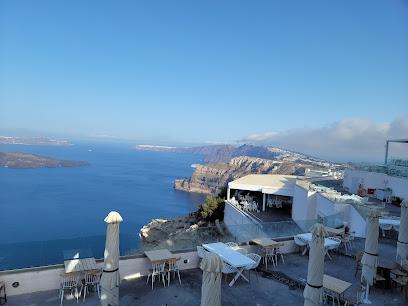
Ancient Thera
Explore the ancient ruins of Thera in Santorini, a historical landmark that offers breathtaking views and a glimpse into Greece's rich past.

Museum of Prehistoric Thera
Discover the rich history of Santorini at the Museum of Prehistoric Thera, home to Minoan artifacts and stunning ancient frescoes.

Skaros Rock
Discover the breathtaking views and rich history at Skaros Rock, a stunning fortress in Imerovigli, Santorini, overlooking the beautiful Aegean Sea.

Pyrgos Kallistis Castle
Explore Pyrgos Kallistis Castle, a historical gem in Santorini offering stunning views, rich culture, and a glimpse into the island's past.
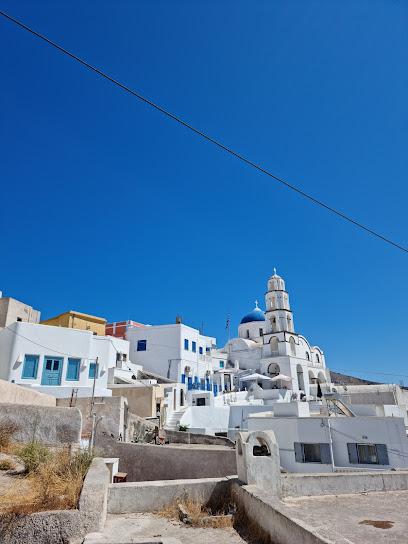
Akrotiri Lighthouse
Experience the breathtaking views and rich maritime history at Santorini's iconic Akrotiri Lighthouse, a must-visit for unforgettable sunsets.
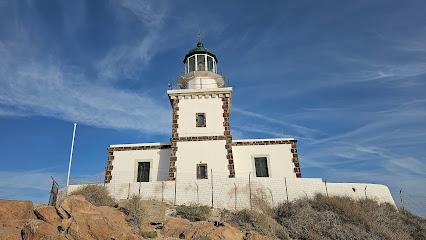
Lost Atlantis Experience - Interactive Museum
Discover the myth of Atlantis at Lost Atlantis Experience, a unique interactive museum in Megalochori that brings ancient history to life.

Santorini Wine Museum
Discover Santorini's rich wine heritage at the Santorini Wine Museum, where history and taste intertwine in a captivating experience.

Metropolitan Church of Ypapanti Thira
Explore the Metropolitan Church of Ypapanti in Fira, Santorini - a stunning Greek Orthodox church with breathtaking architecture and serene ambiance.

Essential places to dine
Metaxi Mas
Experience authentic Greek cuisine with stunning views at Metaxi Mas in Exo Gonia, Santorini – a true culinary delight.

Parea Tavern
Experience authentic Greek cuisine at Parea Tavern in Santorini – where every dish tells a story.

Taverna El Greco
Experience authentic Greek flavors at Taverna El Greco in Fira - where culinary tradition meets stunning views.
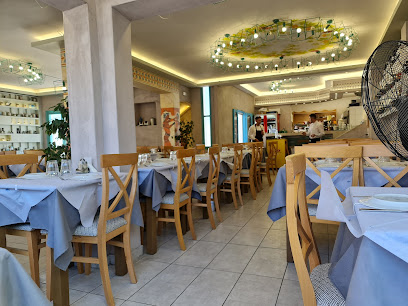
Argo Restaurant
Discover exquisite Mediterranean cuisine at Argo Restaurant in Fira, offering stunning views and a delightful dining experience.

Kokkalo
Experience authentic Greek flavors at Kokkalo in Fira, Santorini - where tradition meets culinary excellence.

To Psaraki
Experience fresh seafood and stunning marina views at To Psaraki in Vlichada - a top choice for Mediterranean cuisine lovers.
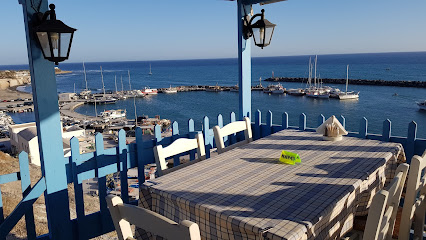
Seaside Santorini
Discover Seaside Santorini - where authentic Greek flavors meet stunning views of the Aegean Sea for an unforgettable dining experience.

Kantouni
Experience authentic Greek cuisine at Kantouni in Pyrgos Kallistis - where tradition meets taste in every dish.

Pyrgos Restaurant
Discover authentic Greek flavors at Pyrgos Restaurant in Santorini – where exquisite cuisine meets stunning views.

La Scala
Discover authentic Greek flavors at La Scala in Fira, Santorini – where every meal is a celebration of local culinary traditions.

Triana Tavern
Experience authentic Mediterranean flavors at Triana Tavern in Fira - where Greek cuisine meets fresh seafood in a vibrant setting.

Ammoudi Fish Tavern
Discover fresh seafood delights with breathtaking views at Ammoudi Fish Tavern in Santorini's picturesque Ammoudi Bay.

Naoussa
Experience authentic Greek cuisine at Naoussa, where tradition meets breathtaking views in beautiful Santorini.

Karma Greek Restaurant
Experience authentic Greek flavors at Karma Greek Restaurant in Oia - a perfect blend of stunning views and delicious cuisine.

Ouzeri
Discover authentic Greek flavors at Ouzeri in Fira, Santorini - where tradition meets breathtaking views.

Markets, malls and hidden boutiques
Epilekton
Explore Epilekton in Oia, Greece, for unique antiques, art, and souvenirs that encapsulate the spirit of Greek culture.

Marilena
Explore Marilena in Pyrgos Kallistis for unique souvenirs that embody the spirit of Santorini, offering local crafts and treasures for every traveler.

Fabrica Shopping Center
Experience the charm of Fira at Fabrica Shopping Center, where shopping, art, and dining blend seamlessly in Santorini's stunning landscape.

Folli Follie Store
Discover the elegance of Santorini at the Folli Follie Store, a fashion accessory and jewelry paradise in the heart of Fira.

Kallisto Gallery
Discover unique handmade souvenirs and local crafts at Kallisto Gallery in Oia, Santorini.

TEPHRA Santorini Exclusive designers Boutique
Discover luxury at TEPHRA Santorini, where exclusive designer fashion meets the stunning views of Fira, offering a unique shopping experience.

Pegasus Boutique Santorini
Discover unique clothing that captures Santorini's spirit at Pegasus Boutique, the must-visit fashion destination in Imerovigli, Greece.

Cave (Spilia) Greek Clothing
Explore unique Greek fashion at Cave (Spilia) Clothing in Oia, Santorini, where tradition meets modern style amidst breathtaking views.

2 FRIENDS
Explore the charm of 2 FRIENDS in Kamari, Santorini, where unique clothing and handcrafted embroidery await every traveler.

Theotokaki Art
Explore unique souvenirs and local art at Theotokaki Art, a charming gift shop in Pyrgos Kallistis, Santorini, perfect for all tourists.

Spicy Boutique/The Lace
Discover unique fashion and accessories at Spicy Boutique in Fira, Santorini - a shopping gem showcasing the island's elegant charm.

Kisira Concept Store
Explore unique Greek fashion at Kisira Concept Store in Santorini, where local designers and stylish finds await.

Andronis Major
Explore Andronis Major in Oia, where modern Greek fashion meets breathtaking views. A shopping experience you'll treasure.

Koukla Art
Explore Koukla Art in Santorini for exquisite handcrafted jewelry that embodies the island's charm and artistic spirit.

Eruption Concept
Discover unique souvenirs and local crafts at Eruption Concept in Kamari, capturing the spirit of Greece with every purchase.

Essential bars & hidden hideouts
Wet Stories
Experience the vibrant fusion of Mediterranean flavors and exquisite cocktails at Wet Stories, Santorini's premier bar and restaurant.

2 Brothers Bar Santorini
Discover the vibrant nightlife of Santorini at 2 Brothers Bar, where great drinks, lively music, and unforgettable moments await you.

PK Cocktail Bar
Discover PK Cocktail Bar: Santorini’s premier cocktail haven, blending stunning views with creative drinks for an unforgettable nightlife experience.

Tango Champagne & Cocktail Bar
Indulge in the vibrant nightlife of Santorini at Tango Champagne & Cocktail Bar, where exquisite cocktails meet stunning caldera views.

Murphy's Bar
Murphy's Bar in Santorini offers a lively atmosphere with stunning sunset views, delicious drinks, and vibrant nightlife for an unforgettable experience.

Stoa Bar Santorini Fira
Experience the vibrant nightlife of Santorini at Stoa Bar, where unique cocktails and a lively ambiance create unforgettable moments.

Buddha-Bar
Experience the luxury of Buddha-Bar in Santorini, where fine dining meets breathtaking views and exotic cocktails in a stylish atmosphere.

Tropical Bar
Experience the vibrant nightlife of Santorini at Tropical Bar, where breathtaking views meet refreshing cocktails and a lively atmosphere.

Sun Spirit
Experience the best cocktails in Oia, Santorini, as you unwind with stunning views and a vibrant atmosphere at Sun Spirit.

Kira Thira Jazz Bar
Experience the vibrant nightlife of Fira at Kira Thira Jazz Bar, where live jazz music meets exquisite cocktails and stunning views.

Bob's Bar
Discover the vibrant nightlife at Bob's Bar in Perissa, a welcoming spot for great drinks and a lively atmosphere.

The Highlander bar
Discover Santorini's nightlife at The Highlander Bar, where lively ambiance meets stunning sea views and exceptional drinks.

Bar To Navagio
Experience the enchanting ambiance and exquisite cocktails at Bar To Navagio, a must-visit cocktail bar in Imerovigli, Santorini.

Vr Cafe Bar
Discover the artistic charm of Vr Cafe Bar in Fira, where exceptional cocktails and stunning views create the perfect getaway.

Lux Bar Santorini
Experience the vibrant nightlife of Fira at Lux Bar Santorini, where exquisite drinks and stunning views await every visitor.

Travel experiences inspired by this city
Explore more travel diariesLocal Phrases
-
- HelloΓεια σας
[Ya sas] - GoodbyeΑντίο
[Adio] - YesΝαι
[Ne] - NoΌχι
[Ochi] - Please/You're welcomeΠαρακαλώ
[Parakalo] - Thank youΕυχαριστώ
[Efharisto] - Excuse me/SorryΣυγνώμη
[Signomi] - How are you?Τι κάνετε;
[Tee kanete] - Fine. And you?Καλά. Εσείς;
[Kala. Esis] - Do you speak English?Μιλάτε Αγγλικά;
[Milate Anglika] - I don't understandΔεν καταλαβαίνω
[Den katalaveno]
- HelloΓεια σας
-
- I'd like to see the menu, pleaseΘα ήθελα να δω το μενού, παρακαλώ
[Tha ithela na do to menou, parakalo] - I don't eat meatΔεν τρώω κρέας
[Den troo kreas] - Cheers!ΥΓΕΙΑ!
[Yia] - I would like to pay, pleaseΘα ήθελα να πληρώσω, παρακαλώ
[Tha ithela na plirosso, parakalo]
- I'd like to see the menu, pleaseΘα ήθελα να δω το μενού, παρακαλώ
-
- Help!Βοήθεια!
[Voithia] - Go away!Φύγε!
[Fiye] - Call the Police!Καλέστε την Αστυνομία!
[Kaleste tin Astinomia] - Call a doctor!Καλέστε για γιατρό!
[Kaleste ya yatro] - I'm lostΈχω χαθεί
[Eho hathi] - I'm illΕίμαι άρρωστος
[Ime arrostos]
- Help!Βοήθεια!
-
- I'd like to buy...Θα ήθελα να αγοράσω...
[Tha ithela na agoraso] - I'm just lookingΑπλώς κοιτάω
[Aplis kitao] - How much is it?Πόσο κοστίζει;
[Poso kostizi] - That's too expensiveΕίναι πολύ ακριβό
[Ine poli akribo] - Can you lower the price?Μπορείτε να μειώσετε την τιμή;
[Borite na meiosete tin timi]
- I'd like to buy...Θα ήθελα να αγοράσω...
-
- What time is it?Τι ώρα είναι;
[Ti ora ine] - It's one o'clockΕίναι μία ώρα
[Ine mia ora] - Half past (10)Μισή (10)
[Misi, deka] - MorningΠρωί
[Proi] - AfternoonΑπόγευμα
[Apoyevma] - EveningΒράδυ
[Vradi] - YesterdayΧθες
[Hthes] - TodayΣήμερα
[Simera] - TomorrowΑύριο
[Avrio] - 1Ένα
[Ena] - 2Δύο
[Dio] - 3Τρία
[Tria] - 4Τέσσερα
[Tessera] - 5Πέντε
[Pente] - 6Έξι
[Exi] - 7Επτά
[Epta] - 8Οκτώ
[Okto] - 9Εννιά
[Ennia] - 10Δέκα
[Deka]
- What time is it?Τι ώρα είναι;
-
- Where's a/the...?Πού είναι ένα/το...;
[Pou ine ena/to] - What's the address?Ποια είναι η διεύθυνση;
[Pia ine i diefthinsi] - Can you show me (on the map)?Μπορείτε να μου δείξετε (στο χάρτη);
[Borite na mou deksete (sto charti)] - When's the next (bus)?Πότε είναι το επόμενο (λεωφορείο);
[Pote ine to epomeno (leoforeio)] - A ticket (to ....)Ένα εισιτήριο (για ...);
[Ena isitirio (ya)]
- Where's a/the...?Πού είναι ένα/το...;
History of Santorini
-
Around 1600 BCE, the island of Santorini, then known as Thera, experienced one of the largest volcanic eruptions in recorded history. This catastrophic event, known as the Minoan eruption, led to the collapse of the central part of the island, forming the present-day caldera. The eruption had far-reaching effects, including the destruction of the Minoan settlement of Akrotiri and the disruption of the Minoan civilization on Crete. The event is also speculated to have inspired the legend of Atlantis.
-
Before the Minoan eruption, Santorini was home to a flourishing Bronze Age civilization. The ancient city of Akrotiri, often referred to as the 'Minoan Pompeii,' was a vibrant settlement with multi-story buildings, sophisticated drainage systems, and stunning frescoes. The well-preserved remains of Akrotiri provide invaluable insights into the advanced urban life that existed on the island during the 17th century BCE.
-
Following the decline of the Minoan civilization, the island was resettled by Dorians around the 9th century BCE. They established the city of Ancient Thera on a ridge of Mesa Vouno mountain. This city became a significant cultural and commercial center, with ruins that include temples, public buildings, homes, and a theater. Ancient Thera remained inhabited until the early Byzantine period.
-
In the medieval period, Santorini came under Byzantine control. In 1204, after the Fourth Crusade, the island was captured by the Venetians who fortified the island and built castles such as the one in Skaros. The Venetians left a lasting impact on the culture and architecture of Santorini, and their influence is still evident in the island's Catholic churches and fortified settlements.
-
Santorini fell under Ottoman rule in 1579 and remained part of the Ottoman Empire until the early 19th century. During this period, the island enjoyed a degree of autonomy and became an important maritime and commercial hub in the Aegean. Santorini's economy thrived, particularly in shipping and wine production.
-
In 1956, Santorini was struck by a devastating earthquake that caused significant damage to the island's infrastructure and buildings, particularly in the towns of Fira and Oia. The earthquake led to a mass exodus of residents, and the island's population significantly declined. However, the disaster also set the stage for extensive reconstruction and the eventual rise of Santorini as a premier tourist destination.
-
In recent decades, Santorini has become one of the most popular tourist destinations in the world, renowned for its stunning caldera views, white-washed buildings, and vibrant sunsets. The island's unique geological history, combined with its rich cultural heritage and archaeological sites, continues to attract visitors from all corners of the globe. Modern Santorini seamlessly blends its ancient past with contemporary luxury, making it a must-visit location for history enthusiasts and travelers alike.
Santorini Essentials
-
Santorini can be reached by both air and sea. The island's main airport, Santorini (Thira) National Airport, receives flights from Athens and other major European cities. Several airlines operate regular flights, especially during the tourist season. Alternatively, you can take a ferry from Piraeus (Athens' main port) or other Aegean islands. High-speed ferries are quicker but more expensive, while conventional ferries take longer but are more budget-friendly.
-
Once on the island, you can use taxis, buses, rental cars, or ATVs to get around. The public bus system is reliable and covers most of the island, including popular destinations like Fira, Oia, and Kamari. Taxis are available but can be expensive during peak times. Renting a car or an ATV offers more flexibility for exploring at your own pace. Parking can be challenging in busy areas, so plan accordingly.
-
The official currency is the Euro (€). Credit and debit cards are widely accepted in hotels, restaurants, and larger shops. However, it's advisable to carry some cash for small purchases and in more remote areas. ATMs are available in main towns, but they can run out of cash during peak tourist season, so plan ahead.
-
Santorini is generally a safe destination for tourists. However, standard safety precautions should be taken. Petty theft can occur, especially in crowded areas like Fira and Oia. Avoid leaving valuables unattended on the beach and be cautious in busy tourist spots. There are no specific high-crime areas targeting tourists, but staying vigilant is always a good practice.
-
In case of emergency, dial 112, the European Union emergency number. The main hospital is located in Fira, and there are several medical clinics around the island. Pharmacies are well-stocked with over-the-counter medications for minor health issues. It's advisable to have travel insurance that covers medical emergencies. For non-urgent issues, seek assistance from your hotel or local tourist information centers.
-
Fashion: Do wear comfortable clothing and footwear, especially if you plan to explore the island's rugged terrain. Avoid wearing swimwear away from the beach. Religion: Do dress modestly when visiting churches and monasteries. Women should cover their shoulders and knees. Public Transport: Do have exact change for bus fares. Don't eat or drink on public buses. Greetings: Do greet people with a friendly 'Kalimera' (Good morning) or 'Kalispera' (Good evening). Eating & Drinking: Do try local delicacies like moussaka, fava, and fresh seafood. Don't leave large tips; a small amount is appreciated.
-
To experience Santorini like a local, visit the smaller, less touristy villages like Pyrgos or Emporio. Try local wines at a winery; Santorini is famous for its Assyrtiko grape. Attend a church festival (panigiri) for an authentic cultural experience. Explore the island's hiking trails, such as the path from Fira to Oia, for stunning views and a sense of adventure. Engage with locals; they are often friendly and willing to share insights about the island's history and culture.
Trending Landmark in Santorini
-
Castle of Oia
-
Akrotiri
-
Santorini Airport
-
Ancient Thera
-
Skaros Rock
-
Three Bells of Fira
-
Museum of Prehistoric Thera
-
Lost Atlantis Experience - Interactive Museum
-
Santorini Wine Museum
-
Akrotiri Lighthouse
-
Moni Profiti Ilia
-
Fira Theotokopoulos Main Square
-
Church of Panagia Akathistos Hymn
-
Akrotiri Santorini Venetian Castle
-
Cathedral of Saint John the Baptist
Nearby Cities to Santorini
-
Things To Do in Pyrgos
-
Things To Do in Mykonos
-
Things To Do in Heraklion
-
Things To Do in Crete
-
Things To Do in Rethymno
-
Things To Do in Chania
-
Things To Do in Kos
-
Things To Do in Bodrum
-
Things To Do in Samos
-
Things To Do in Kusadasi
-
Things To Do in Athens
-
Things To Do in Ephesus
-
Things To Do in Rhodes
-
Things To Do in Marmaris
-
Things To Do in Nafplio






























